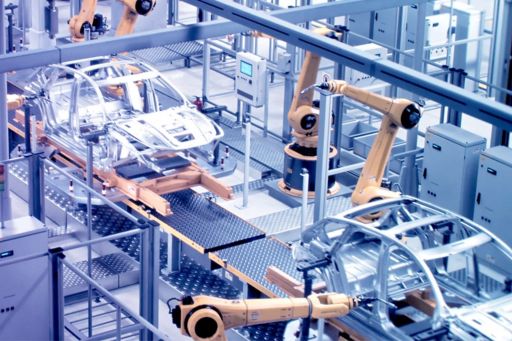In our third annual consumer auto survey, KPMG in Canada examines the interplay between demand, sales, and supply in the automotive industry, and Canadian sentiments towards net-zero emission vehicles, auto dealerships and manufacturers. KPMG researched the opinions of 2,001 Canadians from December 21, 2022 to January 13, 2023 on Schlesinger Group’s Asking Canadians panel. The poll represents a nationally representative sample of adults 18 and older across Canada.1
A year ago, Canadians were showing increased interest in electric vehicles but harboured a number of concerns about range and reliability. When gasoline prices skyrocketed last March after the outbreak of war in Ukraine, enthusiasm for EVs soared, with many Canadians keen to make the switch. But EVs weren’t in dealer showrooms. Indeed, few new vehicles (in any powertrain) were available due to continued disruptions in supply chains and semiconductor chip shortages, leaving many to make purchase decisions based simply on what was available in the market.
Today, a sense of pragmatism has seeped into the market.
The current high inflation, high interest rate economic cycle combined with the lack of supply and ongoing concerns about EV performance and charging reliability have given Canadians reasons to pause.
Continued lack of supply combined with tempered consumer demand, could have significant repercussions for automakers, parts manufacturers and dealers in meeting the government’s zero emission vehicle (ZEV) targets.2 The federal government proposes that 20 per cent of all new automobiles sold in Canada be clean vehicles by the 2026 model year, rising to 60 per cent by 2030 and 100 per cent by 2035. ZEVs are considered battery-electric vehicles, fuel-cell EVs that use hydrogen, and plug-in hybrid electric vehicles. Many automakers have also set their own ZEV targets.
Buying intentions
Almost 70 per cent of Canadians plan to buy a new vehicle by 2033, or within the decade. Most purchases – as many as 61 per cent – will occur within the next five years, according to the Asking Canadians survey by KPMG in Canada. Another 8 per cent plan to buy a new vehicle within the next six to 10 years, and 3 per cent plan to buy after 10 years. Thirteen per cent of respondents said that they just bought a vehicle, new (8 per cent) or used (5 per cent) within the past two years and are not yet thinking about their next one. Three per cent are currently in the market for a used car, and 4 per cent have never owned a vehicle and do not plan to own one. The remaining nine per cent are indecisive about their plans.

But among Canadians planning to buy a new vehicle within the decade, only 28 per cent said they would prefer an EV or PHEV. And only 24 per cent expect to actually buy one given current supply chain issues. Forty-two per cent prefer gas-powered internal combustion engines (ICE) vehicles and 30 per cent prefer electric-petroleum hybrid (which recaptures energy via regenerative braking). Of those in the market for a vehicle within the next five years, the likelihood is they’ll still buy a vehicle powered by an internal combustion engine (ICE)—or will prioritize their purchase on what’s available on dealers’ lots rather than type of powertrain.
Expectations of global EV sales in 2030 are also becoming more realistic. According to a recent Global Automotive Executive Survey by KPMG International, executives predicted that EVs would capture between 20 per cent and 70 per cent of the market by 2030. They are now taking a more cautious view of the challenges of shifting to battery power, with forecasts varying from 10 per cent to around 40 per cent of sales by 2030.
While now expecting a slower transition, executives still view the future as electric. The automotive industry has already committed more than half a trillion dollars to developing new vehicles built in advanced manufacturing facilities while 83 per cent of executives are confident the industry will achieve more profitable growth over the next five years, the KPMG International report found.
Barriers to EV adoption in Canada
EVs may have lost some of their appeal as realities set in—like the lack of a robust charging infrastructure across Canada—during a time of challenging macroeconomic conditions.
As of the second quarter in 2022, ICE vehicles accounted for 87 per cent of all new vehicle registrations in Canada, far ahead of battery electric vehicles at just over five per cent. Hybrid electric vehicles accounted for 6.4 per cent of registrations and plug-in hybrid vehicles just 1.9 per cent.3
In the KPMG in Canada survey, a third (33 per cent) of respondents say a combination of factors are making them reluctant to buy an EV, including cost, charger anxiety, battery technology, limited supply, and rising electricity prices.
While the survey showed preference for alternatives to combustion engines is still strong, Canadians are now taking a more pragmatic approach to electric. They want evidence of proven, reliable technology and enhanced infrastructure. Given the challenges the industry has had getting EVs on Canadian roads, it may be some time before these concerns are addressed and allayed.
33% cite EV hesitancy due to many concerns: cost, charger anxiety, battery technology, limited supply
72% don’t want to spend more than $50,000 on a new vehicle
70% are concerned about the availability and reliability of public EV charging stations
82% say battery degradation remains a huge concern for them
Cost
Almost three-quarters (72 per cent) of Canadians don’t want to spend more than $50,000 on a new vehicle, and more than a quarter (26 per cent) said the cost of an EV is preventing them from buying one.
Rising interest rates are compounding the challenge with 81 per cent of Canadians surveyed saying that rising interest rates have put EVs out of their price range. The average interest rate across all types of auto loans – leases and finances on new and used vehicles -- was 7.66 per cent in November, up from 5.04 per cent a year earlier, according to the latest data from Statistics Canada. However, because those surveyed don’t expect to get an EV for a couple of years due to supply issues, they do expect financing rates will fall or even normalize, reducing or eliminating this barrier to ownership.
Charging anxiety
Nearly 70 per cent of Canadians are concerned about the availability and reliability of public EV charging stations. Another 83 per cent say Canada needs to adopt an EV charging uptime standard and regulatory framework to track charger uptimes for improved reliability—and determine accountability for maintaining charger reliability. Canada currently doesn’t have any national standards for charging stations.
Many (79 per cent) feel governments should subsidize the cost of home EV chargers.
Battery technology
At the same time, 78 per cent of Canadians are not convinced that battery technology is evolving fast enough for automakers to meet the Canadian government’s zero emission vehicle targets. There’s concern about battery performance in cold winter weather; 82 per cent say battery degradation remains a huge concern for them. It’s also the reason why 73 per cent wouldn’t consider buying a used EV.
Supply chain
There are also ongoing concerns about the supply chain, with 64 per cent of Canadians saying they’re frustrated with the months-long waiting list for most models (regardless of powertrain). Sixty-five per cent are frustrated by the microchip shortage and 77 per cent don’t think supply issues will be resolved anytime soon.
Fuel-Cell Vehicles
The survey found that just over half of Canadians would explore buying a hydrogen fuel-cell vehicle, and 70 per cent would rather buy a ZEV that takes minutes to fill up (like fuel-cell EVs powered by hydrogen) than the extra time it takes to recharge a pure battery-powered EV. However, 46 per cent think fuel-cell EVs powered by hydrogen are dangerous and unsafe.
Challenges and opportunities ahead for automakers
As many as 71 per cent of Canadians believe EVs need to be financially accessible to everyone—which means smaller cars, with smaller battery packs—yet 80 per cent won’t consider buying an EV unless it has a minimum 400 km range fully charged. And 73 per cent would only buy an EV with a “massive battery pack” to ensure they get a longer range. These conflicting objectives pose challenges for automakers and dealers alike.
The combination of concerns over weak consumer demand and persistent supply challenges suggest that Canada may struggle to meet its ZEV targets – in 2026 and beyond.
These factors have global auto executives paring back expectations on EVs in the short term.
Automakers are increasingly shifting their focus to revolutionizing the cockpit with technology that drivers can download to their car’s on-board computer. They’re looking to offer an à la carte menu of features such as horsepower upgrades and dashboard gaming systems, which could generate double-digit margins.
For example, Ford is shifting focus from its Argo self-driving research to driver-assistance features, such as its hands-free BlueCruise system. At the 2023 Consumer Electronics Show (CES), Stellantis and Amazon demonstrated how connected cars will transform the in-vehicle experience with personalized services, and Volvo and chipmaker Qualcomm showed how they’re revolutionizing the cockpit with infotainment and safety systems.
While many of the auto executives in KPMG’s global survey expect Apple to enter the market and become a leader in EVs by 2030, Canadians remain lukewarm to the prospect with only 38 per cent saying they’re willing to buy an EV made by a major technology company—such as Apple, Google, Samsung, Huawei and Tencent. That’s down from 49 per cent in last year’s survey.
With mainstream legacy automakers expected to unveil a raft of new EV models at competitive price points this year, Canadians are realizing that Tesla isn’t the only electric car available anymore. When asked to identify which EV/PHEV brands Canadians are most likely to purchase, the top three were: Toyota, Honda, and Tesla, which dropped from the top spot last year to third.
While 67 per cent of Canadians would prefer to buy an EV assembled in North America rather than one imported from another global region, that percentage has fallen from 75 per cent last year—which may reflect a recognition that getting an EV made anywhere remains a challenge.
Reliance on cars made outside North America may be a necessity in the near-term. “The cars made in Canada and supplied by Canadian companies will not be the ones that automakers need to use to meet the 20 per cent ZEV mandate in 2026 because the production won’t be here. So, they’ll rush external product here with Chinese batteries, and I’m not sure that meets the government’s climate objectives,” says Flavio Volpe, president of the Automotive Parts Manufacturers’ Association (APMA), Canada’s national association representing original equipment suppliers to the worldwide automotive industry.
The infrastructure to support a surge in EV vehicles across Canada is not yet fully developed. “There’s a realization that non-plug-in hybrids are going to be a major part—if not the biggest part—of the product mix for the next 20 years, because it will take that long for the charging infrastructure and the energy distribution infrastructure to catch up,” said Volpe.
Challenges and opportunities ahead for auto dealers
Without consistent inventory, it’s difficult for auto dealers to sell more EVs. Few Canadians (only 12 per cent) will wait more than two years for an EV; 30 per cent say they bought a used car in the interim because they couldn’t wait a year for an EV or PHEV. Consumers are buying what’s available on the lot—and that’s typically gas-powered vehicles.
Global auto executives expect consumers will increasingly shop online, which means OEMs and e-commerce players could end up competing with dealerships. While few Canadians indicate they would buy an EV online (although it’s of greater interest to those under 35 years of age), 67 per cent would buy direct from an OEM, bypassing the dealer network altogether.

Auto dealers are under immense pressure to improve sales and service, especially if OEMs start selling directly to consumers. Many Canadians (77 per cent) expect dealerships to be EV-ready, capable of helping them figure out which battery pack and capacity they’ll need and trained to provide repairs and maintenance. Eighty-eight per cent expect dealerships to provide chargers, battery range upgrades and battery replacement warranties.
Just over half of Canadians would like their auto dealer to have the capability of converting or retrofitting their gas-powered vehicle to an electric one; 78 per cent say it’s a waste to trash perfectly good gas-powered automobiles. But that’s not as easy, or realistic, as it may sound. An all-electric vehicle has a larger cabinet and higher voltage system than a gas-powered vehicle; swapping an internal combustion engine for much heavier batteries also puts additional strain on the suspension and chassis. So, it could by more costly and complicated to retrofit and electrify a gas-powered car—for inferior performance—than buying new.
To adapt to changing consumer expectations, auto dealers may have to become a one-stop EV shopping experience, including installation support for home chargers—and this could require merging with other dealerships. This might also mean offering subscription services to bring in additional revenue.
Global auto executives see a market for software subscription fees such as car maintenance analytics, advanced driver assistance and other over-the-air updates. Already, they are evaluating ways to monetize the connected vehicle experience and strengthen relationships with their customers by offering them services that can be bought outright or on a subscription basis.
However, the transition to connected services will require a different mindset both within OEMs and among consumers. The OEMs will need to bring in new people with software backgrounds and an as-a-service mindset, also taking care to protect customer data. As well the KPMG survey shows that Canadians right now are reluctant to pay for such services. Only 18 per cent of Canadian consumers say they’re willing to pay an annual or monthly subscription for features such as cruise control, remote start, lane-keeping assist and automatic emergency braking. Only 17 per cent would pay an annual or monthly subscription fee for heated or cooling seats. A majority (64 per cent) are not willing to pay an annual or monthly subscription fee for battery protection, despite their concerns about battery performance.
The road ahead
When it comes to ZEVs, the survey data indicates that Canada may not hit its aggressive zero-emission targets by 2026. OEMs will bear the brunt of this, since they could face monetary penalties for not meeting those targets. This could squeeze margins for auto parts manufacturers. Dealers, in turn, will be under immense pressure to sell EVs and change their business model, despite limited supply and uncertain demand.
Given these challenges, more investment will be needed to rapidly roll out charging infrastructure, as well as improve battery performance, to gain consumer trust in EVs.
To gain better control over the supply chain, global auto executives are focusing more on near-shoring and re-shoring, as well as direct sourcing of raw materials, especially for battery components. That means more lithium, cobalt and nickel mines and refineries will be needed in North America and Europe. All of that takes time. While there’s concern that jobs will be lost as Canada makes the switch from ICE to EV, near-shoring and re-shoring could create new jobs. There will also be a need for workers with knowledge of advanced manufacturing, as well as those with skills in electronics engineering, mechanical engineering and data science.
All signs show that Canadians want to reach the same destination: A carbon-free vehicle future. Consumers are looking for greener alternatives. Federal ZEV mandates have been announced. The OEMs have already committed to EV production. However, inflationary pressures and current and foreseeable supply chain restrictions are putting all three objectives in peril. Against this backdrop, the question has become, will Canada be able to meet near-term ZEV targets? The journey may well take longer than initially anticipated.
Our KPMG automotive specialists can help you navigate the road ahead.
Insights and resources
Connect with us
Stay up to date with what matters to you
Gain access to personalized content based on your interests by signing up today
Connect with us
- Find office locations kpmg.findOfficeLocations
- kpmg.emailUs
- Social media @ KPMG kpmg.socialMedia






